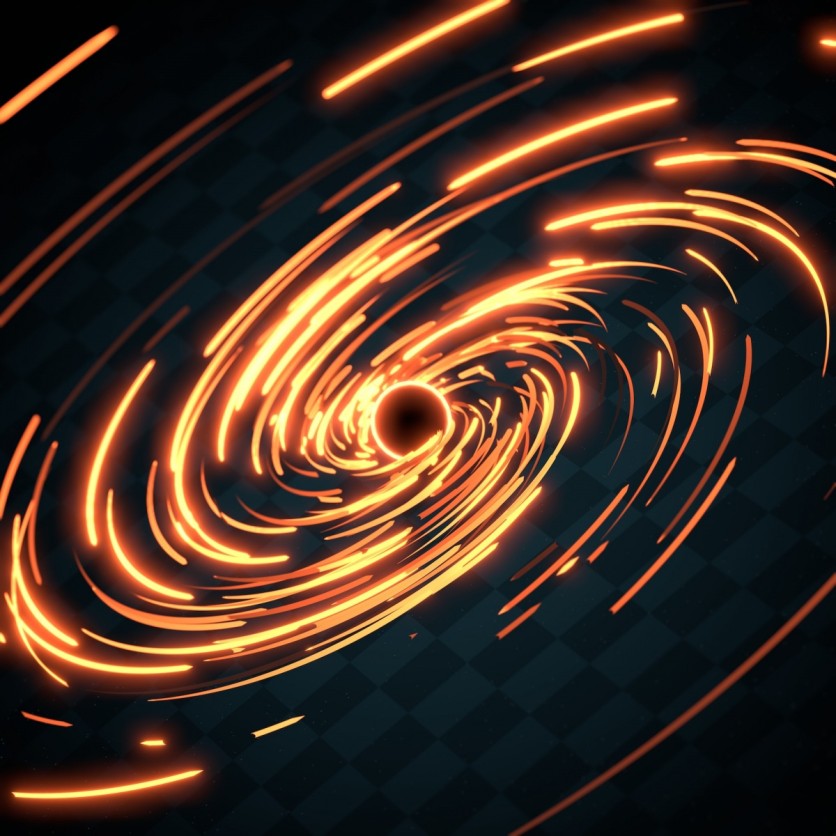Astrophysicist Matt Caplan sparks intrigue with a groundbreaking theory that challenges the very fabric of our understanding of dark matter.
His recent paper, provocatively titled "Is there a black hole in the center of the Sun?" delves into the cosmic mystery of dark matter, proposing an unconventional candidate: atom-sized black holes.
While the idea of a black hole in our Sun may be dismissed, it serves as a gateway to a far-reaching theory about the nature of dark matter.
Journey into the Unknown: Exploring Dark Matter

Dark matter and dark energy collectively shroud over 95% of the universe, yet they elude direct observation.
Caplan's theory navigates this cosmic mystery, suggesting that primordial black holes, each the size of an atom, generated during the universe's infancy, could constitute the elusive dark matter. Amid various speculative dark matter candidates, the notion of mini-black holes introduces a captivating twist to the cosmic narrative.
Related Article : This Massive Black Hole Devours Half a Sun Every Year and Fires Leftovers at Earth
Primordial Black Hole Hypothesis
Caplan and his colleagues propose that atom-sized black holes, remnants of the early universe, may have found a peculiar abode within stars.
Contrary to the Sun harboring a black hole, the focus shifts to other stars potentially cradling these tiny cosmic anomalies within their cores. The hypothesis transcends our solar system, opening avenues to explore the broader cosmic landscape.
From Concept to Cosmos: The Hawking Stars Connection
The genesis of this cosmic exploration traces back to a conversation during the COVID-19 pandemic.
Collaborating with astroseismologist Earl Ballenger, Caplan contemplated the inclusion of a black hole in simulations, triggering a realization of its viability as a dark matter candidate.
Termed "Hawking stars" in homage to Stephen Hawking, these stars could be celestial hosts to atom-sized black holes, offering a unique avenue to probe the cosmic unknown.
Hunting for Hawking Stars
The quest to validate this cosmic hypothesis involves identifying certain stars, "Hawking stars," exhibiting peculiar characteristics during their red giant phases. Caplan suggests focusing on puffy, dimmer red giants, which may betray the influence of an accreting black hole within.
According to Space.com, the potential dimness stems from the shift in power source during the giant phase, transitioning from fusion to accretion, fundamentally altering the star's luminosity.
Accretion-Powered Giants
The red giant phase becomes accretion-powered in the hypothetical scenario of a star containing an atom-sized black hole. This leads to a distinctive appearance, characterized by a "puffy cloud" surrounding the small black hole, creating an astronomical spectacle.
Caplan emphasizes that the intricate interplay between accretion and fusion processes shapes the observable features of these Hawking stars.
Towards the Cosmos' Edge: What Lies Beyond
As scientists gear up to search for these enigmatic Hawking stars, the implications extend beyond our immediate cosmic neighborhood.
Caplan's theory prompts a reevaluation of the dark matter paradigm, introducing a compelling narrative where the cosmos conceals pockets of primordial black holes within stars. The upcoming cosmic detective work promises to unravel a celestial mystery that has captivated humanity's imagination for decades.
In the cosmic theater of dark matter, where the script is yet to be written, the concept of atom-sized black holes introduces a fascinating plot twist. Even then, there are some things that astronomers do not know exist.
Read Also: NASA Hubble Space Telescope Detects Massive Cyclones Raging on a 'Hot Jupiter'

![Apple Watch Series 10 [GPS 42mm]](https://d.techtimes.com/en/full/453899/apple-watch-series-10-gps-42mm.jpg?w=184&h=103&f=9fb3c2ea2db928c663d1d2eadbcb3e52)



